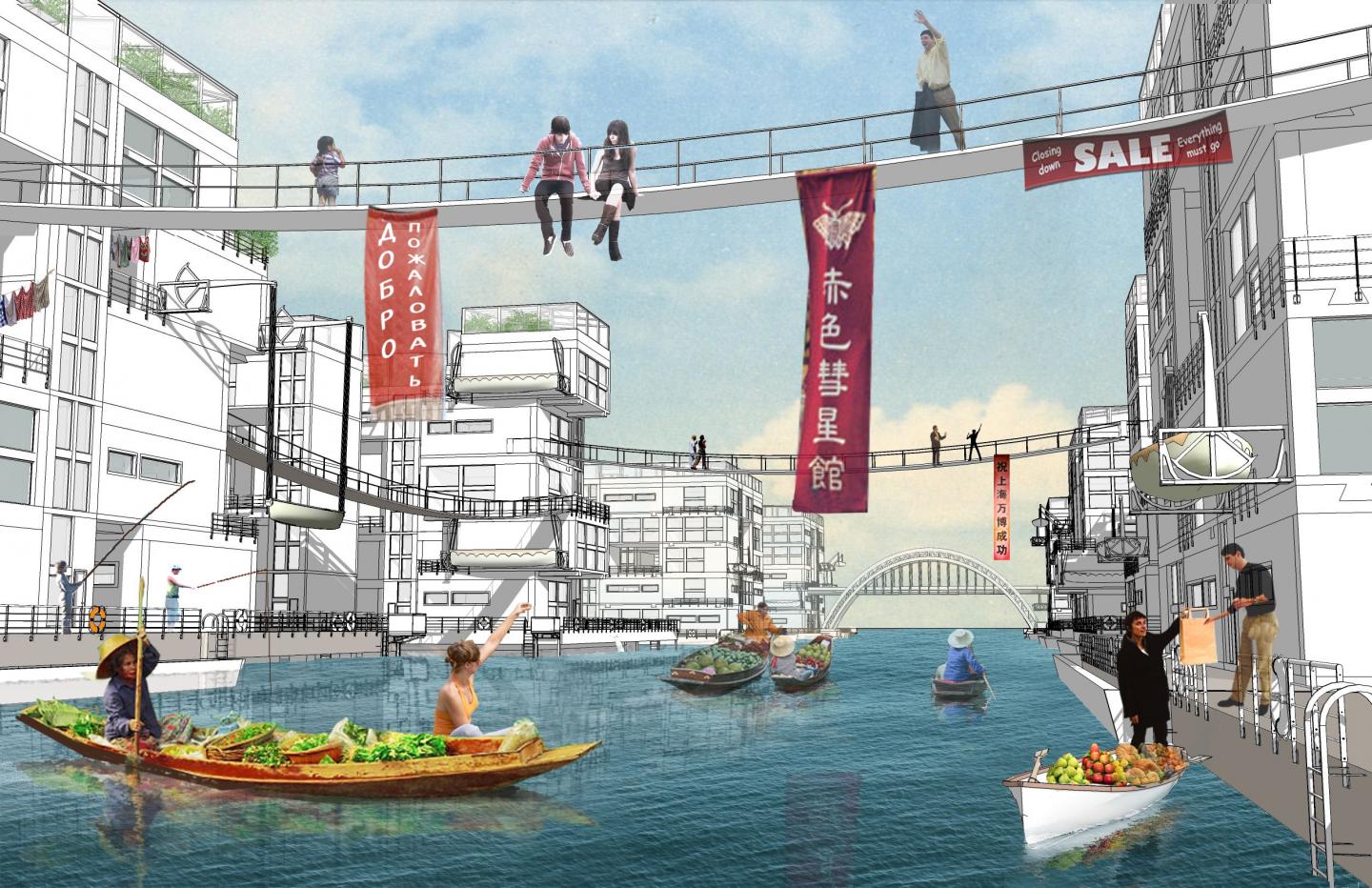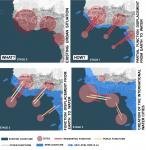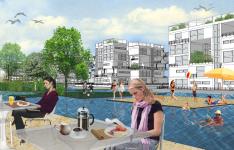Sea level rise can be defined as an increase in sea level caused by global warming through two main processes: the thermal expansion of sea water and the rapid melting of land ice.
A third of the world’s population living within 50 km of the coasts and a large percentage of them live much closer to the shoreline. Even a modest sea level rise could inundate low-lying regions, accelerate coastal erosion and force the relocation of communities and infrastructures.
Scientists suggest that by 2080, sea level rise could convert as much as 33 percent of the world’s coastal wetlands to open water.
Sea level rise is also expected to make coastal cities more vulnerable to extreme weather (such as hurricanes) as well as to destroy important ecosystems.
Islands are gradually facing the loss of their fresh water supply due to salt-water intrusion. Low-lying coastal areas and deltas (at least 300 million people) are particularly threatened by sea level rise.
Water cities can and should be directly designed and
transformed by their inhabitants, its human nature-to
seek for changes.
That is why the city consists of different floating easily
movable units: public islands for different purposes,
residential and public buildings, symbol tower, etc.
Any unit can be moved away or added to a city(optional).
Every person should feel free to leave or join any water city
in the world.
2009
Malinin Alexander, Sheveleva Anastasia






